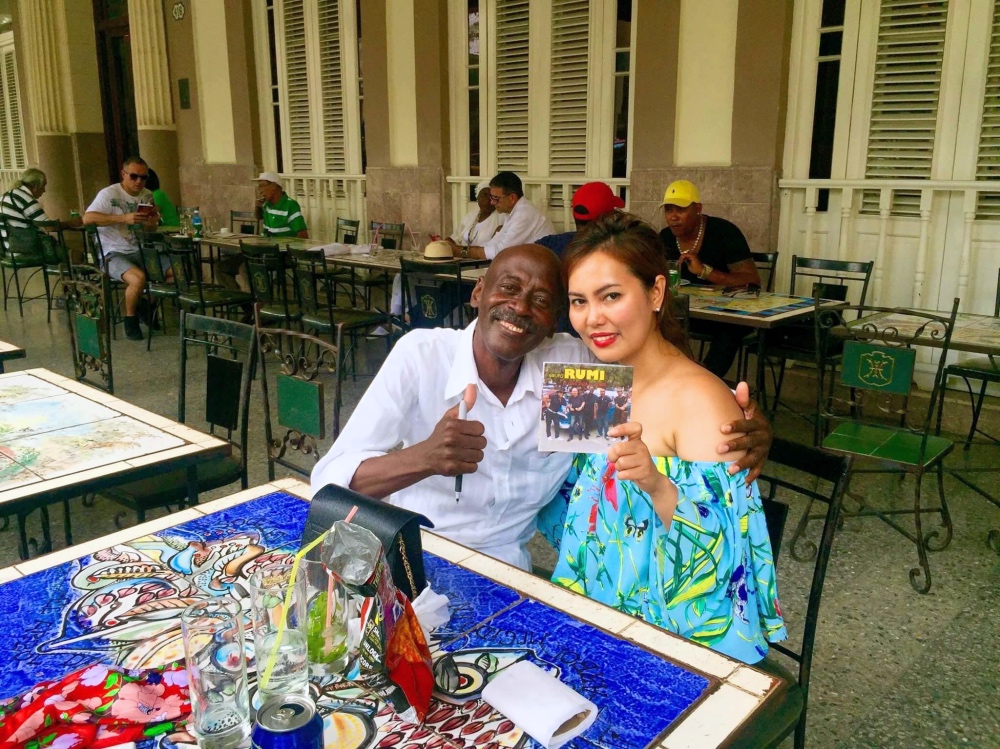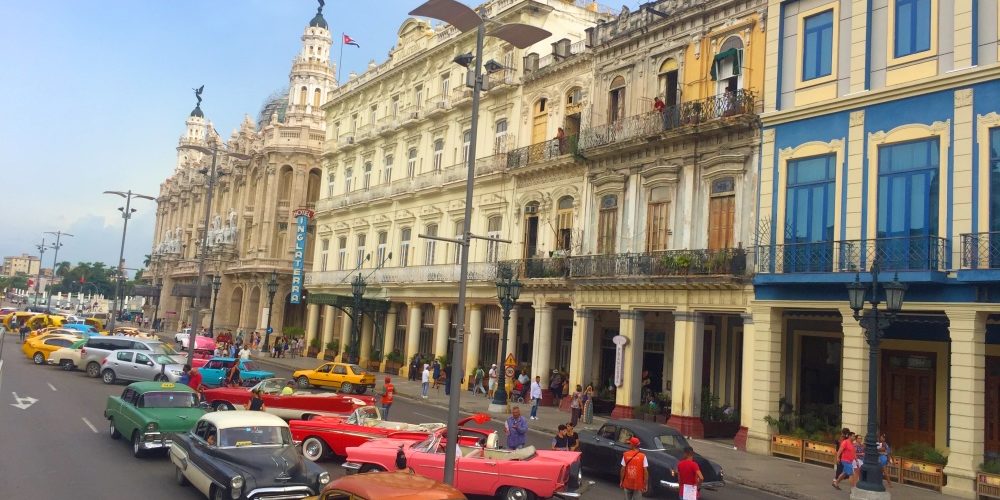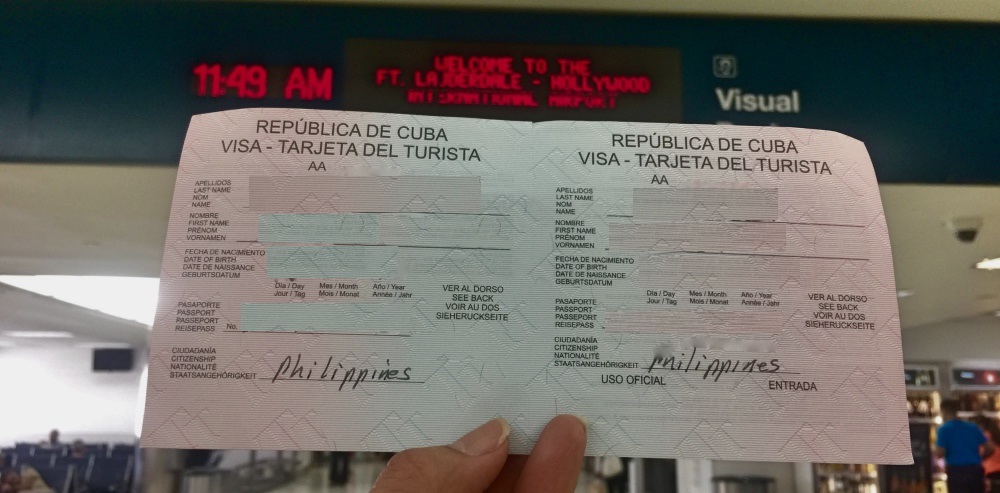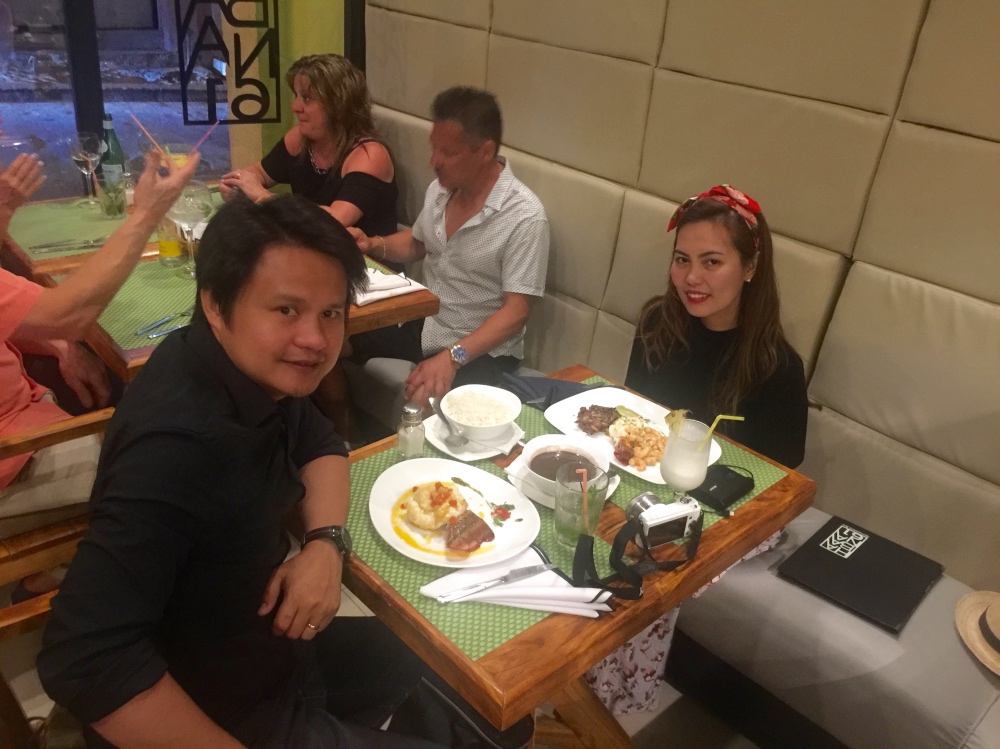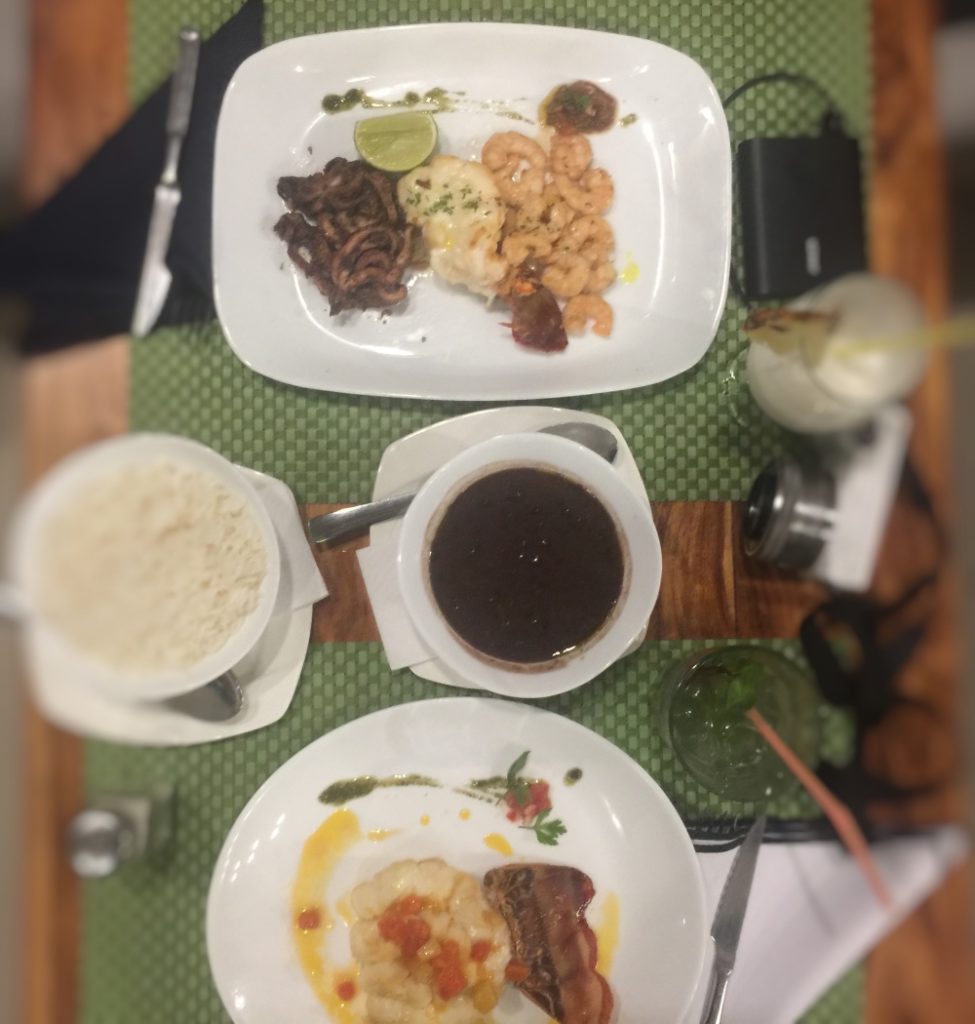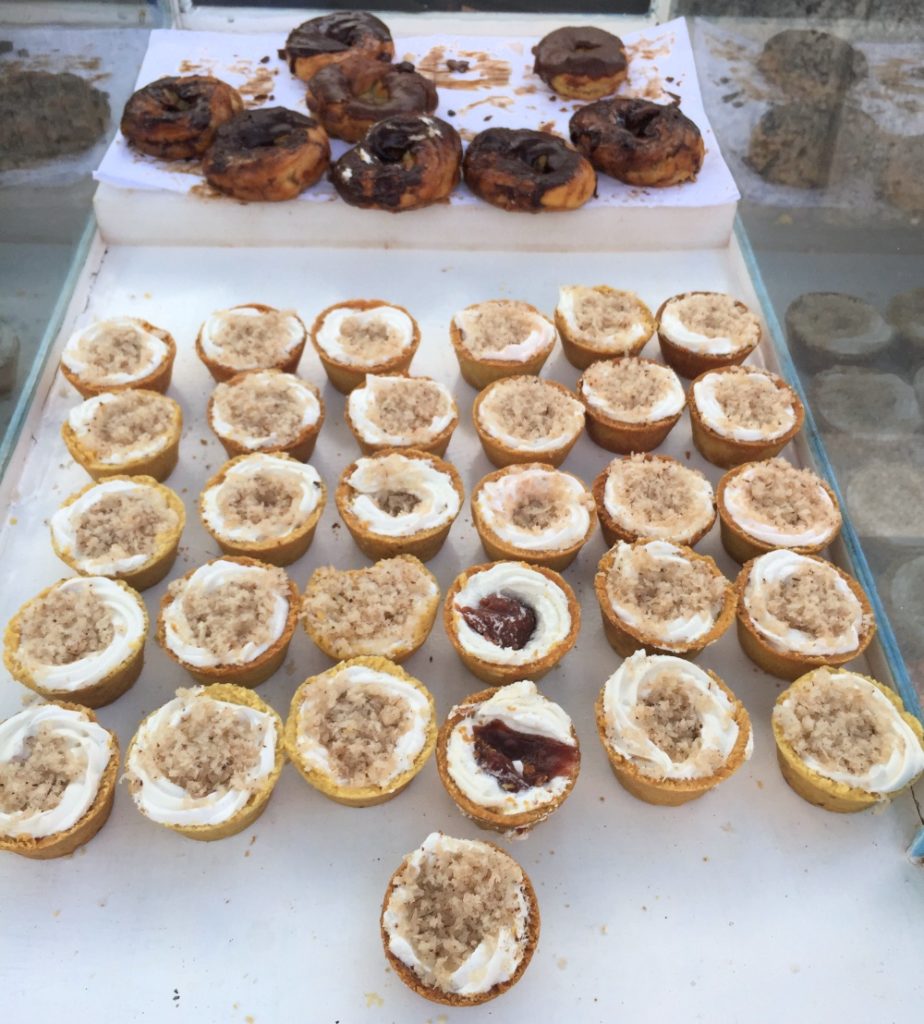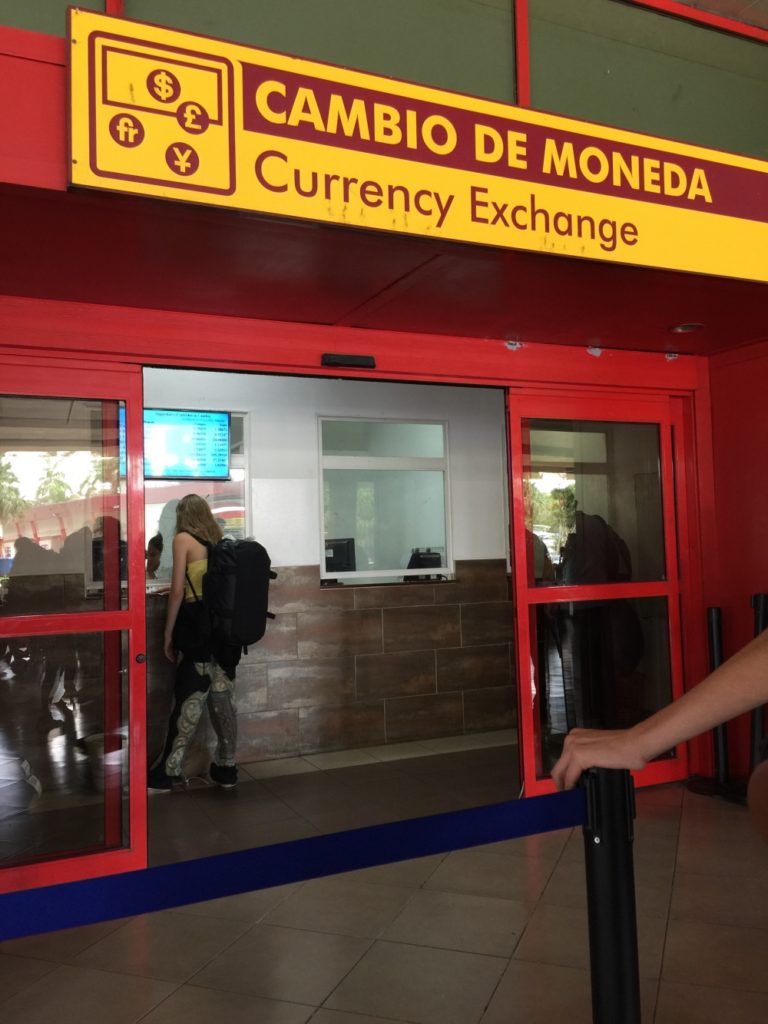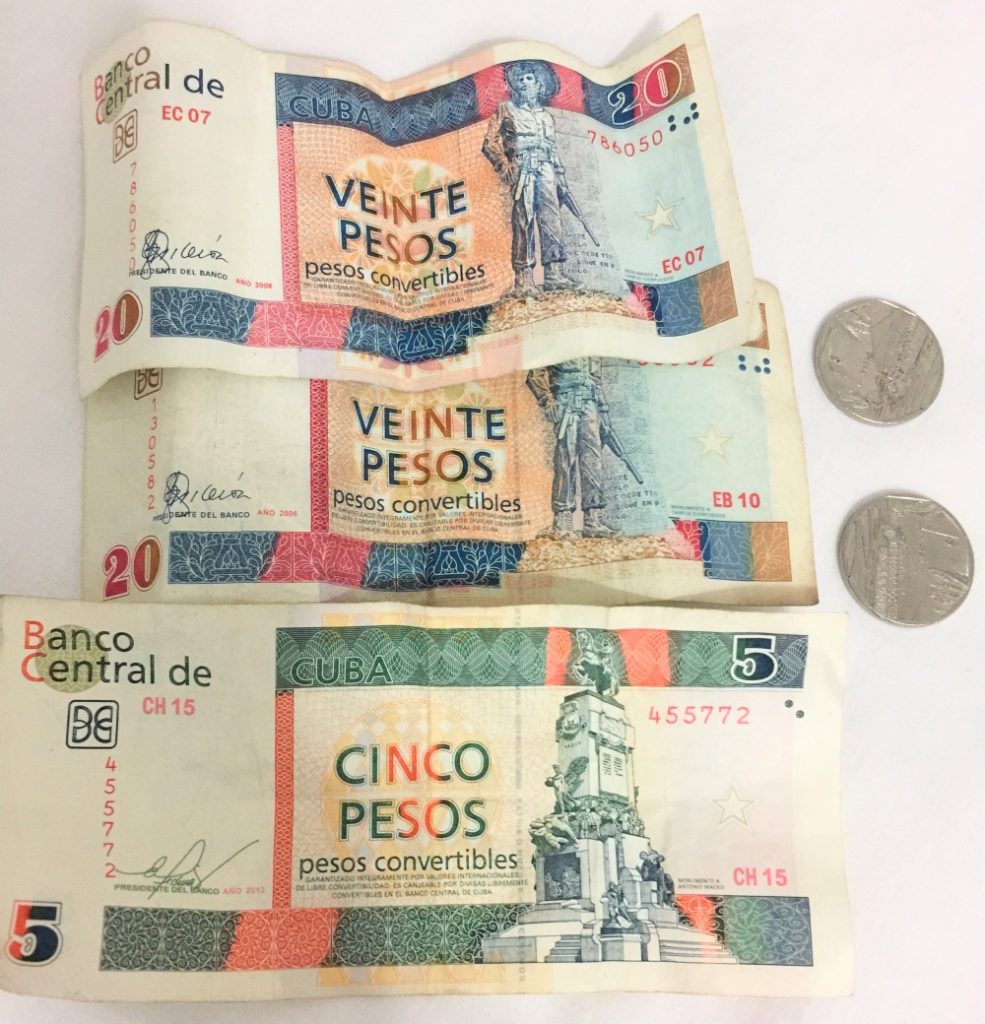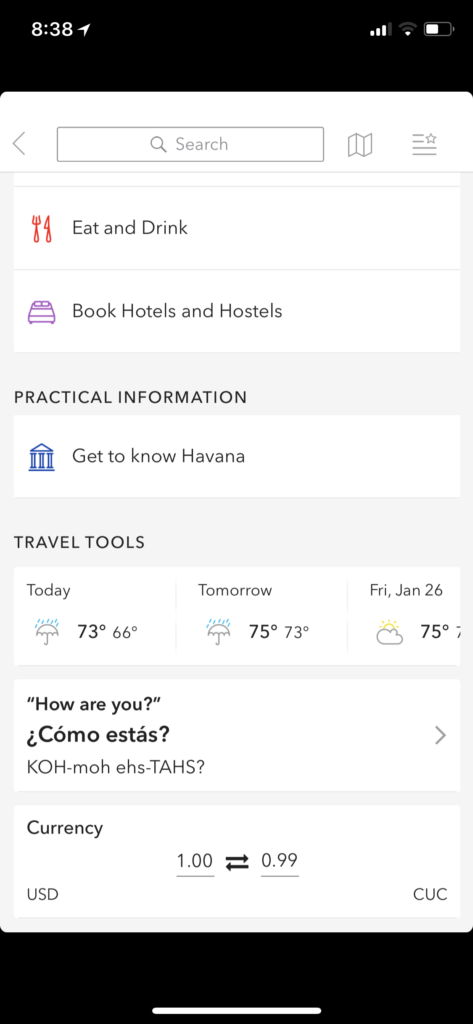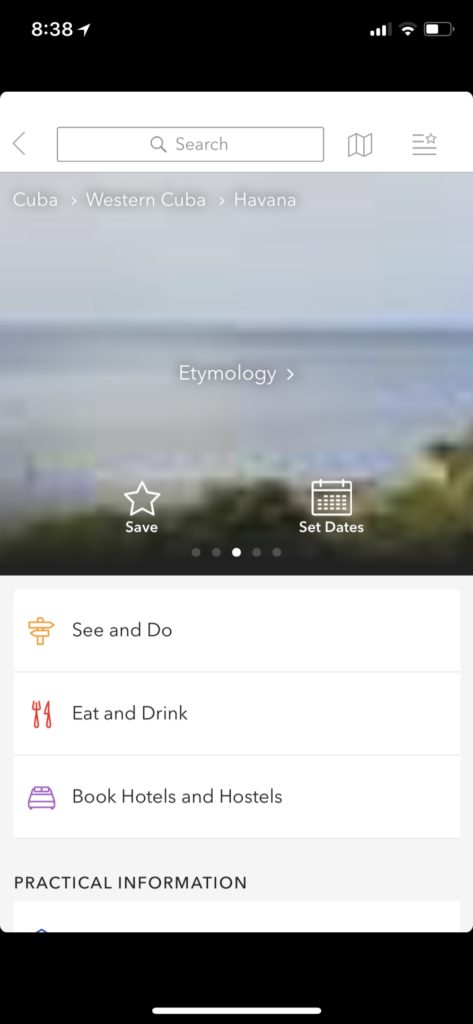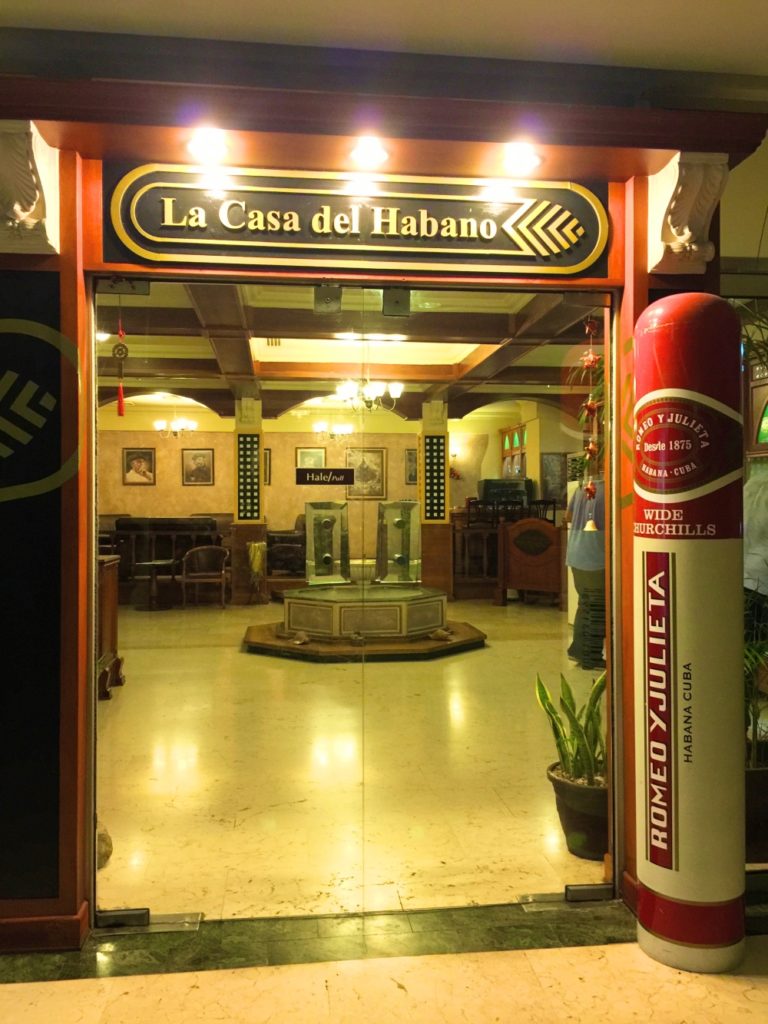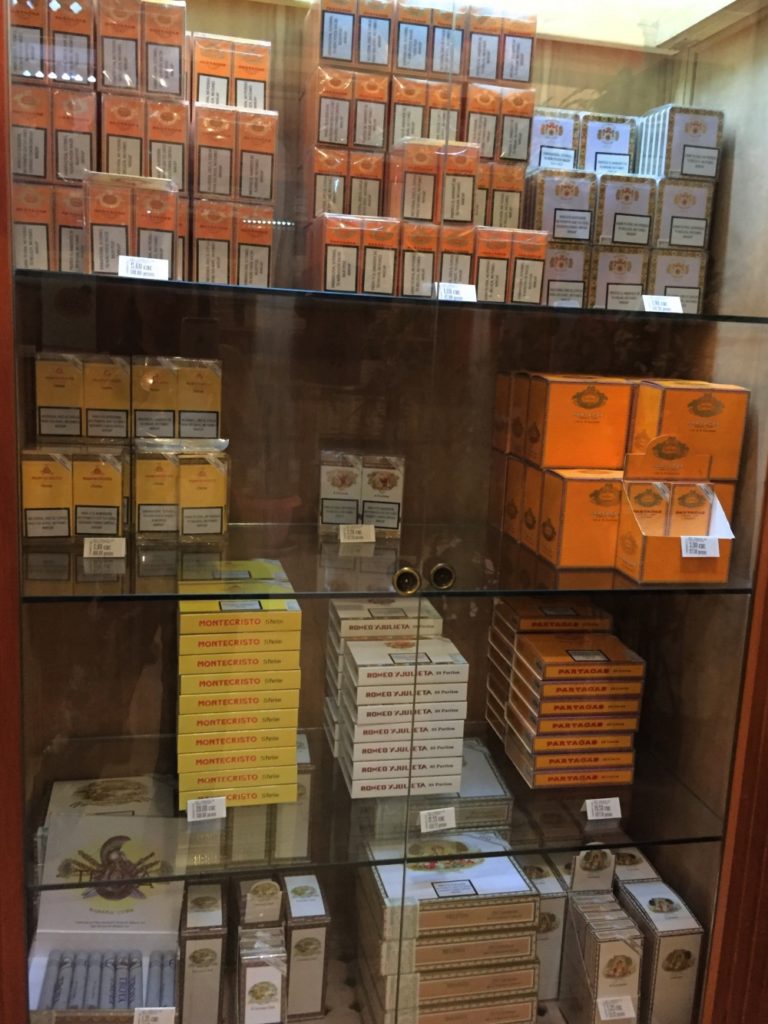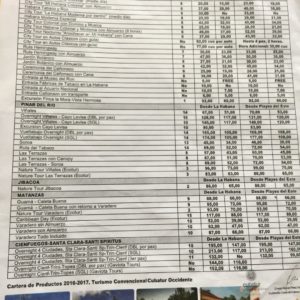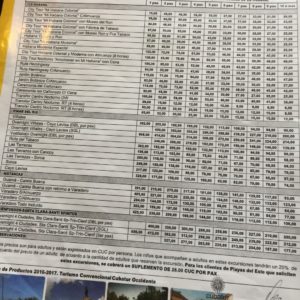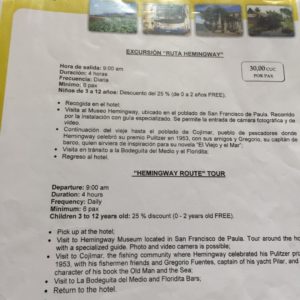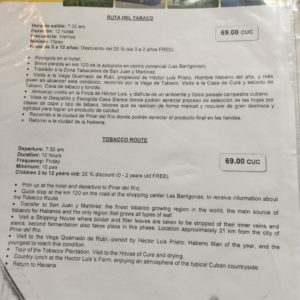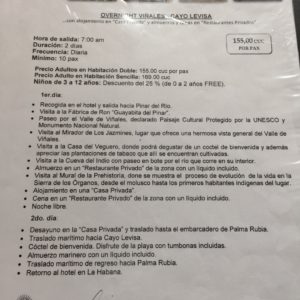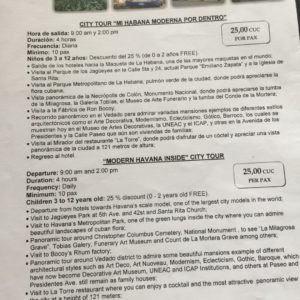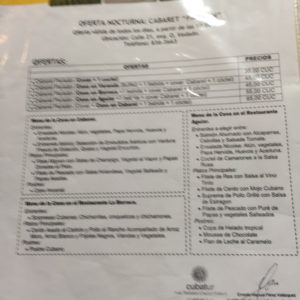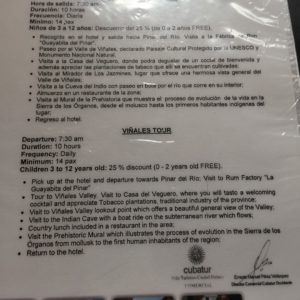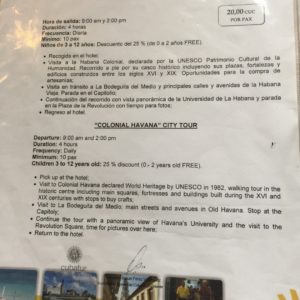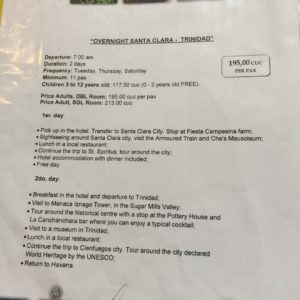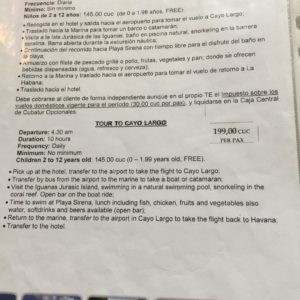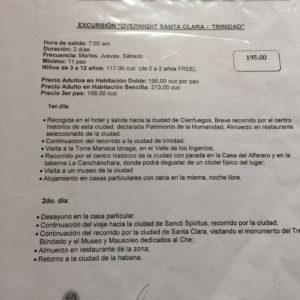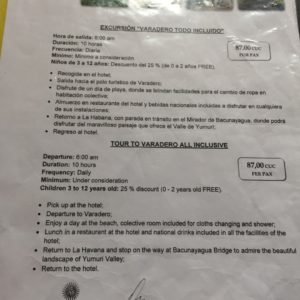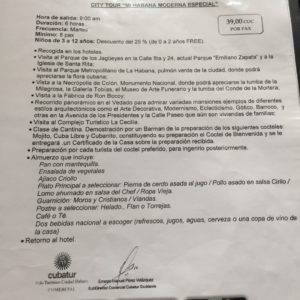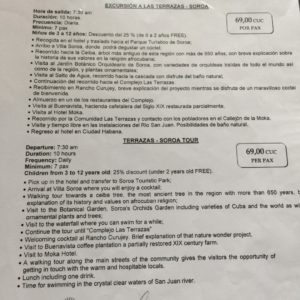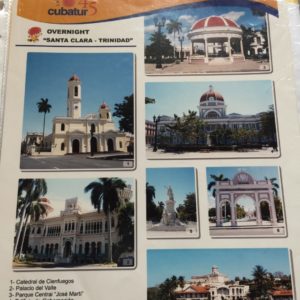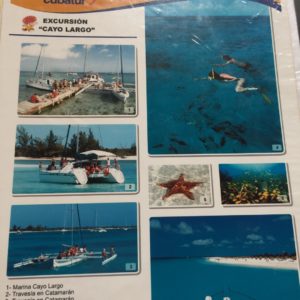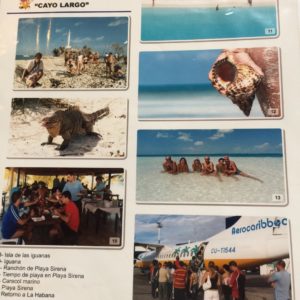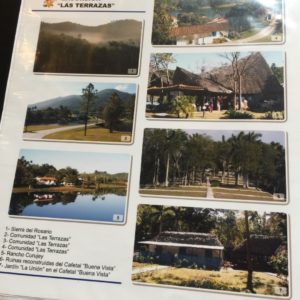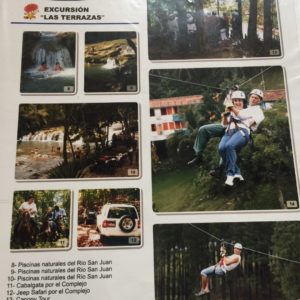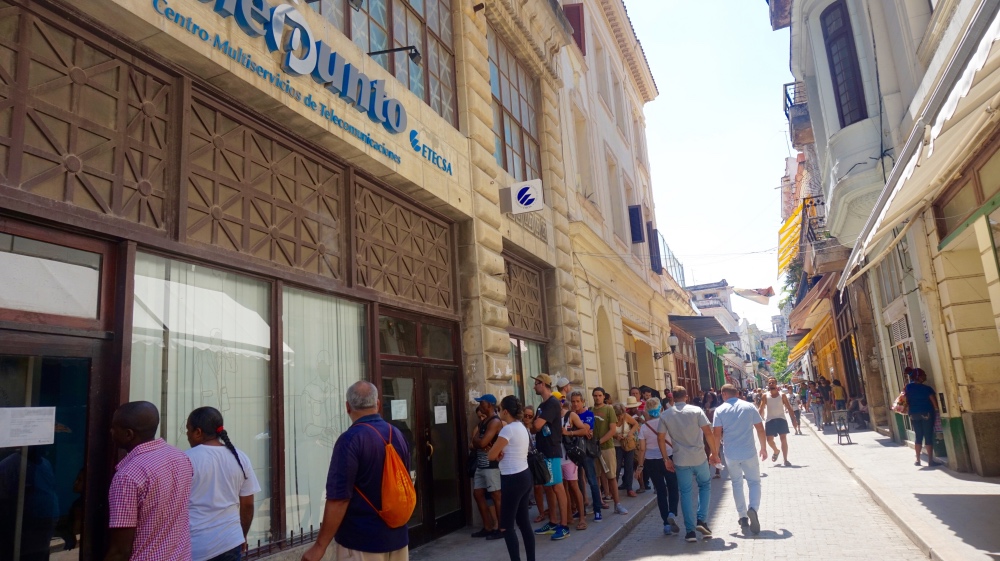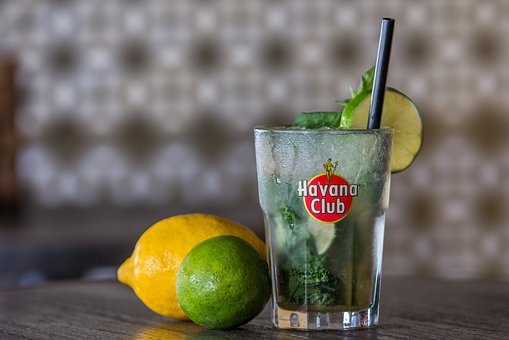There are a few rules about traveling to Cuba that put people off. But most of these rules really only apply to American’s. Cuba is open for tourism contrary to many people’s belief matter of fact tourism is the life blood of modern Cuba. The difficulty lies not in traveling Cuba but in traveling Cuba as an American.
Today I wanted to share with you a list of things you should know before going to Cuba. I was aware of some of these before we arrived in Havana, while others were a more of a shocking surprise once we got there.
If you’re planning a trip to the “sugar bowl of the world” in the near future, here are 30 things I wish I had known before my visit.
1. Almost Everyone need a visa.
- Cuba Tourist Card
If you don’t belong to the 18 visa exempt Countries listed here you must obtain a visa or a tourist card from a Cuban Embassy in your Country, travel agencies, or any authorized airlines. Most International Flight traveling to Cuba can provide you a tourist card before check in at a price ranging from 50 -100 USD.
We flew direct to Havana from Florida via Jet Blue Airline at Fort Lauderdale Airport and got our tourist card at the check in counter for 50 USD. Some people I met while in Cuba traveled from Mexico and also got the tourist card from the airport, but don’t be too comfortable, I know most airlines coming from Europe doesn’t issue a tourist card. It’s best to inquire at specific Airlines before buying your ticket. Most Airlines traveling to Cuba have details on their website.
Note: In some Countries, It maybe more difficult to acquire a visa from Cuba Embassy than acquiring a tourist card from Airline check in counter.
2. Best time to visit
If you ask a Cuban, they will tell you that Dec-Feb is their favorite time of the year. Not too hot and comfortable for doing lots of walking around, This is also a time when you can find a lot of tourist on the Country. However, some parts of Cuba can get Chilly during this month, So if you easily get cold like me I don’t recommend planning a beach holiday during this months.
July until early November is hurricane season in Cuba. We were in Havana first week of September and it was very warm and very humid, but this is Caribbean and this is of course as we expect. Lucky for us! It only rained once during our entire 6 days stay but Hurricane Irma hit Cuba a week after we left.
3. Forget about Hotels, Stay in Casa Particular
The Cuban equivalent of “airbnb” are Casa Particulares.
If you don’t want to experience Authentic Cuban way of life, Eat good breakfast and dinner, have insider tip and pay a lot of money! then stay in Government owned Hotel in Cuba.
As our host Julio of HostalLaRampa “Airbnb took root in the simple idea of bringing people together through the better use of empty rooms”.
We leased our Casa in Havana through airbnb in the area of Vedado with a wide rooftop overlooking Hotel National for 50CUC, a fraction of the cost we would have paid had we stayed in Hotel Nacional. On top of that, I wouldn’t have this amazing picture of me overlooking the busy street of Vedado with Hotel National as a backdrop. Priceless!!
Staying in casa does not limit you in entering the premises of different hotels. In Havana we spent most of our time at the lobby of most hotels getting online while sipping our favorite mojito.
4. Most Casa Particular offers good breakfast/Dinner for a reasonable price
One of the many advantage of staying in a Casa particular is a privilege of dining with a family of local Cuban people while indulging an authentic Cuban cuisine.
The best food I have had while in Cuba has been in private homes, whether in casa’s or in paladares. Other meals are just tummy filler.
Also, it wasn’t very easy to find somewhere for breakfast outside of the casa, even in city like Havana, so in most instances we went for a big breakfast at the casa and a small, cheap lunch (or skipped lunch completely).
A typical breakfast in a casa looks like this, with prices varying from 5 – 10 CUC.
5. Eat in Paladares
Like Casa’s, Paladares are privately owned restaurants, usually run by a Cuban family and just like staying at Casa Particulares, dining at paladares directly benefits the Cuban people who own and run them. Plus, the food is often much better than what you’ll get at other (touristy) restaurants, which serve second rate food and have slow service.
President Obama dined in San Cristobal, also a Paladar when he visited Havana. And if it’s good enough for Obama, It’s good enough for us.
We queued long hours in hope of tasting authentic Spanish food at Los Nardos – as suggested by Tripadvisor, and though the servings were huge the Paella I ordered taste bland. On the positive note, it’s probably the only time I appreciate my Spanish cooking.
- Havana 61
- Food is served
6. Take snacks with you.
Grocery shopping is practically nonexistent in Cuba. So if you like snacking in between meals, bring your favorite snack with you. The land is not setup to sustained demand of tourist . There is hardly any street food even in the most touristic areas.
Here is a complete list of what you can and cannot bring in Cuba.
- Cuban Street Food
7. Take your favorite spice with you.
You might want to bring your favorite seasonings as the cuisine can sometimes be quite bland and the seasonings are not available everywhere blame it on the embargo.
8. And bring other things you might need
Medicines, sunscreen
9. You need travel Insurance.
Yes! It’s Compulsory.
Government of Cuba requires that all travelers visiting Cuba from abroad purchase travel Health insurance and this is often checked by immigration upon arrival in Cuba. If you are flying directly from the US, most US airlines provide insurance for Cuba to their passengers and it comes included in the price of the return flight.
10. Bring Euro’s instead of US Dollars.
When exchanging US Dollars to Cuban CUC there is a 10% additional charge in addition to the 3% charge on all currency exchanges. Which makes US Dollars a poor choice of Currency to take to Cuba.
The foreign currencies that are commonly accepted to convert into pesos in Cuba are US dollars, Canadian dollars, British pounds, euros, Japanese yen, Mexican pesos and Swiss francs.
There is a Currency Exchange located just outside Jose Marti International Airport. Alternatively, you can exchange your money at any banks or CADECA’s in Cuba.
- Money Exchange outside Jose Marti International Airport
11. And take more cash you think you might need.
In Cuba Cash is King. Most cards are not accepted and atm machine are scarce.
Contrary to many’s belief, Cuba is not a cheap destination. It is probably the most expensive destination for travelers in all Latin America.
12. Download the Cuba App
Download the Cuba App before leaving for Cuba. This is probably the best tip we had for our Cuba travel. We got totally disconnected in Cuba and depending on google maps for locations isn’t possible. Cuba app was a life saver not only in locating bar, shops and restaurants. It also gives practical information about specific attraction in Cuba.
13. Take a Vintage Car Tour
You can’t say you’ve been in Havana without doing the Vintage Car tour. Head on to Old Havana and Hotel Nacional and you’ll see oodles of colorful classic car all lined up there.
And don’t forget to load your cellphone before leaving for Cuba with Latin songs that you can play while your on board.
14. Have some handy Spanish with you
While you can certainly get by with English, a little Spanish helped us tremendously in getting to know our casa owners and hearing their stories.
Having some little Spanish also help us in communicating simple thoughts and sentences with locals we met at bars, on the street, vendors, and even haggle with cab drivers.
“Me estás poniendo triste” translate as “you are making me sad”, is what I will always say when they wouldn’t lower the price and it work most of the time!
15. Do all your research before arriving Cuba.
Technology is at its lowest in Cuba, so it’s best to come prepared especially when our friend Google is unavailable.
16. Print out your documents before leaving.
Finding internet spot in Cuba is a struggle, I can’t imagine finding a computer/ print shop. I actually didn’t come across any during my 5 days stay.
17. Buy your Cigars at Legit establishments only.
I can’t track how many people tried to sell us Cigars on the street of Havana on our first day.
If a nice guy approaches you on a street corner in Havana and tells you he can get you a box of cigars wholesale from his friend who works in a factory, chances are, they are selling you a fake cigar which can get you in to trouble with Cuban custom when leaving the Country. You can buy your Cigars at duty-free shop or at any La Casa Del Habano shop. We bought ours from the branch inside Hotel Habana Libre.
- Tabacco shop inside Hotel Libre
- Cuban tabacco
18. Know the price you have to pay
Here are some actual costs we incurred while in Cuba to help you determine your budget.
Bare in mind that 1$USD exchange to 0.87 CUC at the time of visit.
Cuba Drink Costs
- Beer in corner store: 1 CUC
- Beer in restaurant or casa particular: 2 CUC
- Mojito at Hotel Inglatera 1.5 CUC
- Mojito at : 5 CUC
- 1.5 liter bottle of water at corner store: 2CUC
- 12-oz bottle of water at casa particular: 1 CUC
- Coffee at a cafe: 1 CUC
- 1 liter bottle of Havana Club light rum (3-year): 7 CUC
Food & Restaurant Prices in Cuba
- Street food pizza: 2 CUC
- Churros from street vendor: 1 CUC
- Cuban sandwich at takeout restaurant: 2 CUC
- Big breakfast at your casa particular: 6 -10 CUC per person
- Lobster dinner at casa particular: 15 CUC
- Lobster dinners at mid-scale restaurant: 10 -12 CUC
Tour Costs in Cuba
Transportation Prices in Cuba
- Taxi Between the Old Havana, Vedado and Centro Havana neighborhoods: 5 CUC
- Taxi from Jose Marti International Airport to Havana and vise versa : 25 CUC
- Taxi from Havana to Viñales, one way : 90 CUC
- One way bus ride from Havana to Viñales: 14 CUC per person
- Taxi from Havana to Varadero, one way : 95 CUC
- Taxi from Havana to Trinidad: 160 CUC
- One-way Viazul bus ticket from Cienfuegos to Trinidad: 7 CUC
- Taxi from Playa Larga to Cienfuegos: 35 CUC for taxi (7 CUC per person, shared with 5 people total)
- Taxi from Vinales to Playa Larga: 35 CUC per person
19. No Direct flight from Asia, Travelers need to connect through Europe, Canada, US and Mexico.
I’m not going to lie to you – Cuba is not an easy place to travel to. There are a handful of countries where you can fly direct to Havana from, so the hurdles go up immediately.
20. Practice your Chess board skills
Cuban’s are good in Chess. That being said, make sure to practice your skills before arriving Cuba. Play a friendly game with the locals and make sure you’re not playing with a professor or you lose even the slightest chance of winning.
21. Bring colorful clothes less white.
What better way to match up your trip to Cuba than with a colorful dress. A light natural fabric is ideal for the warm tropical island of Cuba. I find that pastel colors photographed best with the colorful houses and vintage cars of Havana.
The best rule is to Bring less white as the street of Havana are often dusty.
22. Travel light
Not only most airline traveling to Cuba don’t have free check in allowance. This will also relieve you of hassle waiting 2 hours for your check in baggage to arrive. That’s if it gets to you un-touched.
We waited 2 hours for our luggage to arrive at Jose Marti Airport Arrival, enough time for us to witness the long queue of travelers at the lost and found reporting a missing or damage baggage.
23. Do Cuba on your own.
You don’t need to join any organized group or book a tour to see the Country. All you need is good planning.
24. Cuba is safe to travel.
Having lived in one of the safest Country on the planet for almost a decade now. I think I know safety means you can walk from Old Havana to Vedado in the middle of the night and arrive at your casa safe.
Cuba is generally safe for as long as you’re reasonably careful with your belongings. And just like any other Country that receive high tourist demand, minor crime is common in particular pickpocketing and snatching.
25. Get in the airport at least 3 hours before your flight.
I know the rule of thumb for an International flight is to arrive at least 3 hours but this is Cuba so you have to expect the unexpected.
26. Read a little bit about the history of Cuba.
We had no idea just how little we know about Cuba until we arrived. I’ve seen pictures of Cuba’s colorful houses and vintage cars on instagram and immediately decide I want to go to Cuba.
Cuba is one country that requires some dedicated time to understand the country’s complex history. Doing just a little bit of research will make your experience much richer because it will help you to understand the leadership that is in place, the music, the poverty, the sacrifices and the perpetual fight for freedom.
Suggested Documentary film: The Cuba Libre Story.
27. You need an internet Card to access internet in Cuba
I knew that the WiFi signal is awful in Cuba but I didn’t expect it to be as bad as it was once we arrived. There is no public WiFi instead – WiFi cards are available at government-run ETECSA stores. They cost CUC1.5 per hour and you can only purchase a maximum of 3 cards per passport per day.
The struggle begin with finding a hotspot area which could be at a hotel or a park. From there you try to connect to the signal by signing in with a username and password.
If you live outside American Continent, It’s also best to note that your local simcards may not work in Cuba. This means connecting to WiFi signal with your ETECSA card is not possible and with a depressingly low signal tethering/hotspot is impossible. Lucky for me, I have a US simcard which I use in Miami on our short holiday before we went to Cuba- while Mr. Travellaine’s Qatar local simcard did not worked at all.
28. Drink a lot of Mojito and Pina Colada
This one is a no-brainer. Where else in the world can you drink the most authentic mojito than in its birthplace.
- Mojito
29. Cuba is a family oriented Country.
To say the least, traveling with family is okay.
30. ENJOY CUBA!
It’s people and it’s Culture…
